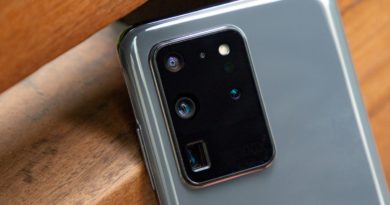iPhone 12 battery life — the one tip you need to know to save juice
The iPhone 12 is the first 5G iPhone, and naturally, prospective buyers will have a lot of questions. How fast will 5G be in my area? What can I do with 5G better or differently that I couldn’t on 4G LTE? And, perhaps most importantly at the moment, what will 5G mean for my battery life?
According to our iPhone 12 battery test results, the news isn’t encouraging. We’ve run both the 6.1-inch iPhone 12 and iPhone 12 Pro through our custom test, which involves continuous web surfing over a data connection while set to 150 nits of screen brightness. During these sessions, both the iPhone 12 and 12 Pro were connected to 5G; the iPhone 12 lasted 8 hours and 25 minutes, while the Pro lasted 9:06.
Those times aren’t great, as the average smartphone lasts around 10 hours on a charge. The iPhone 11 Pro, which wasn’t exactly known for its longevity relative to the other iPhone 11 models, lasted nearly 10.5 hours when we tested that phone a year ago.
To measure the impact of 5G on the iPhone 12’s battery life, we then decided to re-run our test, but on LTE. The results were eye-opening, with both the iPhone 12 and iPhone 12 Pro lasting about two hours longer when set to avoid 5G entirely. That left the iPhone 12 at 10:23, and the iPhone 12 Pro at 11:24. That iPhone 12 Pro LTE result would place that model on our list of best phone battery life for devices tested in the last 18 months.
Now, there could be a couple different factors at play here. It’s possible that the 5G signal in our testing was too weak. I observed an average of two out of a possible four bars in my experience on AT&T’s 5G network in suburban eastern Pennsylvania. If a phone can’t pull down a stable, strong signal, it searches for a better one. And when it can’t find it, it ends up switching back and forth between slow 5G or fast LTE, all of which consumes power. We can’t conclusively say that this was the cause of our iPhones’ poor performance during battery testing, but it may play a role.

Or, it could simply be that 5G consumes more power than LTE, and thus, Apple’s latest devices perform worse when connected to the faster network. That’s certainly plausible.
Regardless of the cause, the fact is that we saw better longevity on a charge on LTE. And because 5G is still in its infancy, even though carriers have launched networks all throughout the country, 5G infrastructure is massively failing to reach its speed targets, especially in its sub-6GHz, long-range deployment. That means you won’t necessarily see a speed decrease on nationwide 5G compared to LTE; in fact, your phone may download and upload faster, at least at this point in time.
How to turn off 5G on iPhone 12

Bearing all this in mind, we have a suggestion. If you are buying an iPhone 12 and you notice the battery life isn’t quite where you’d like it to be, simply turn 5G off. Fortunately, there’s an easy way to do just that, right from the iPhone’s Settings app.
Open Settings and head over to Cellular; from there tap Cellular Data Options, and then, Voice and Data. Here you’ll see an option for what preferred data type you’d like your iPhone to use. The option you choose won’t be the only type of data you receive; rather, you’ll get everything under it too, so 5G does still allow for LTE, for example.
From there, it’s as simple as tapping LTE, and you’re set. Your iPhone 12 will no longer attempt to connect to 5G networks, potentially saving time on a charge.
Why you should leave iPhone 12 5G turned on
We do still recommend new iPhone 12 users leave 5G on and at least see how the network affects their device. The results we observed surely won’t be the same for everyone, because data performance is obviously highly dependent on location. Additionally, if 5G happens to be really fast where you live, you might just elect to keep it on, battery life be damned.
For what it’s worth, Apple has designed a feature to assist with battery life on 5G, called Smart Data Mode. This setting is built into the iPhone 12 — it’s that 5G Auto option that’s active by default — and it instructs the device to fall back to LTE during situations when the screen is off but data is still being streamed up or down (like when listening to Spotify or Apple Music, for example).
The thinking is that if you’re not actively scrolling, watching or interacting with the display in some way, you don’t necessarily need all the throughput 5G allows, and using LTE instead can help your iPhone last longer through the day.
Smart Data Mode was switched on when we conducted our tests, though the nature of its design — that it really only becomes a factor when the screen is off — means it probably didn’t play a role in our testing. However, people in the real world don’t use their phones for 10 straight hours of web browsing, so Smart Data Mode could certainly make a positive difference in daily usage, and thus we encourage users to at least observe the kind of mileage they get on 5G before ditching it entirely.

